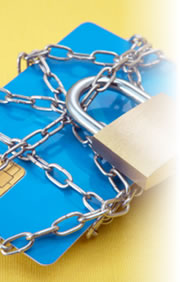Credit card debt problems could make a comeback

A couple of years ago when memories of the credit crunch’s pain was fresh — and many were still suffering — this column regularly covered the threat posed by card debt. Indeed, when bankers again started to market plastic to sub-prime borrowers, we accused, in Credit card lending: Bring on the tripping goldfish, the executives who run credit card companies of lacking the attention span of goldfish swimming in an LSD solution.
Luckily, our more apocalyptic predictions of the possible impact of loosening lending criteria have not materialized — not yet, anyway. But new research from the Federal Reserve Bank of New York, The Quarterly Report on Household Debt and Credit (PDF), published Feb. 28, suggests that credit cards could again become a problem for many Americans.
Credit card debt rising
Five groups of statistics revealed by the Fed’s study are especially worrying (some figures were derived from graphs so it’s worth treating them all as approximate):
- By the end of 2012, there were 383 million credit card accounts open. That’s much less than the nearly 500 million that existed when the number peaked in 2008, but a slight increase on the previous quarter. The trend has been a gradual but largely steady increase since a recent low was reached in mid-2010.
- Credit card balances rose by $5 billion in the last quarter of 2012 — and had increased in the third quarter, too.
- The latter half of 2012 saw an end to the fall in the percentage of credit card accounts that were 90+ days delinquent, a trend that had been continuing since March 2010. Instead, that percentage began to creep up again, and by the end of last year was around 11 percent.
- Looking at all forms of debt (not just credit cards), in Dec. 2012, an astonishing 14.6 percent of all consumers had an account in collection by a third-party debt collector (not the company to which they originally owed the money). The Fed says that most of these debts probably relate to outstanding medical and utility bills.
- In all (so including “good” debt, such as mortgages), American consumers owed $11.34 trillion in the fourth quarter. That was up $31 billion (0.3 percent) on the previous three months, and was a reversal of the downward trend seen since a peak of $12.64 trillion in the third quarter of 2008.
The silvery lining
Not all news in the Fed’s study was bad:
- The total (aggregate) value of card credit limits dropped very slightly (by $9 billion or 0.3 percent) in the last quarter of last year.
- The number of credit inquiries (applications for all new accounts, not just credit cards) also fell a little over the same period. There were 164 million of them, compared with 167 million in the third quarter.
- Delinquency rates across all forms of debt improved in the fourth quarter. At the end of the year, 8.6% of outstanding debt was delinquent to some extent, compared with 8.9% six months earlier.
- Over the last decade, those who have a credit report have, on average, seen their scores rise, though only by a little.
What to make of the data
Credit card debt has upsides and well as downsides. For example, many argue that the economy won’t fully recover its usual vibrancy until consumers regain confidence, and once more begin borrowing less cautiously. So you can read positively — at least for the nation’s wider economic fortunes — some of the data that have been reported here negatively.
The problem arises on a personal level when people get used to using their plastic to indulge their whims, and then run up balances they can’t comfortably manage. And it arises for whole economies when too many people do that.
Here’s an idea…
On Mar. 5, Capital One unveiled the findings of a poll it commissioned into taxpayers’ plans for their federal tax refunds, which this year look set to average $2,805. Thirty-five percent say they’re going to spend all or part of their refund. Of those:
- 23 percent intend to take a vacation
- 16 percent clothing and accessories
- 15 percent electronics
That’s absolutely fine for those to whom debt is no bother. But paying down by $2,805 a card balance that’s attracting 16.82 percent APR (the average credit card rate at the time of writing) could save someone close to $500 in interest alone over the next year — more, if they use that savings to pay down their balances further each month. That’s generally not as much fun as a vacation, but it’s worth thinking about.
Disclaimer:The information in this article is believed to be accurate as of the date it was written. Please keep in mind that credit card offers change frequently. Therefore, we cannot guarantee the accuracy of the information in this article. Reasonable efforts are made to maintain accurate information. See the online credit card application for full terms and conditions on offers and rewards. Please verify all terms and conditions of any credit card prior to applying.
This content is not provided by any company mentioned in this article. Any opinions, analyses, reviews or recommendations expressed here are those of the author’s alone, and have not been reviewed, approved or otherwise endorsed by any such company. CardRatings.com does not review every company or every offer available on the market.
Published